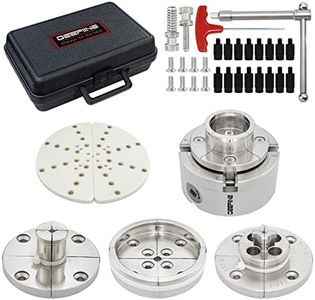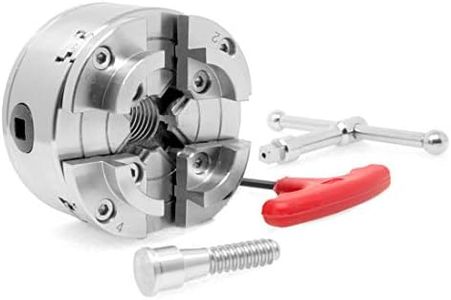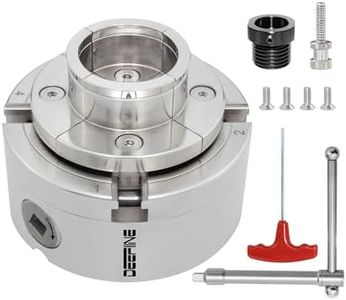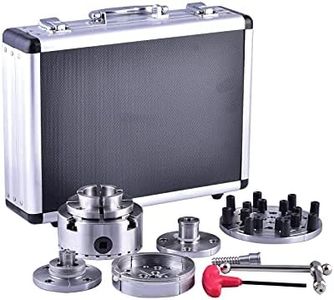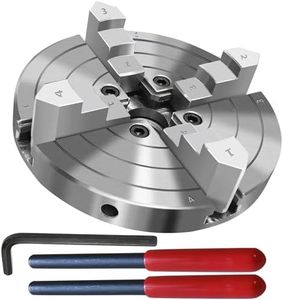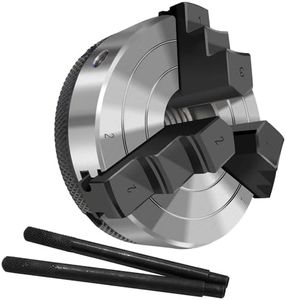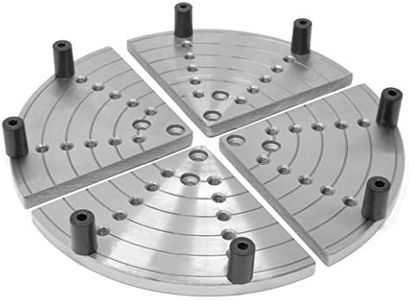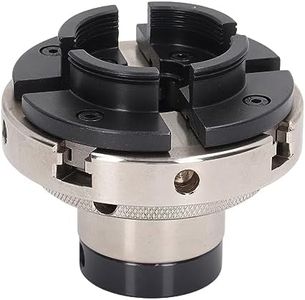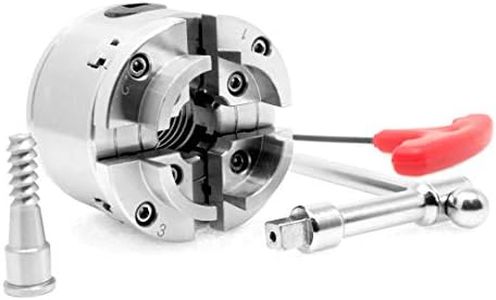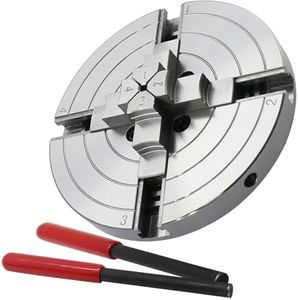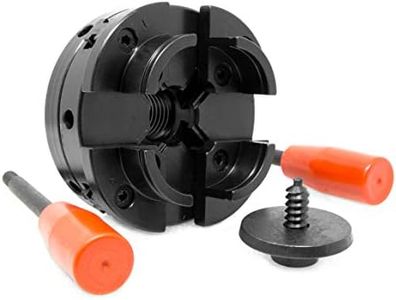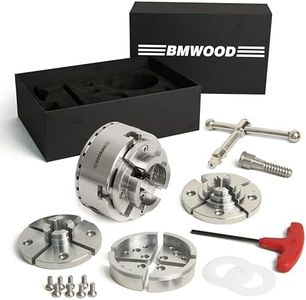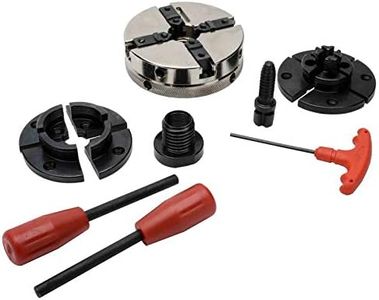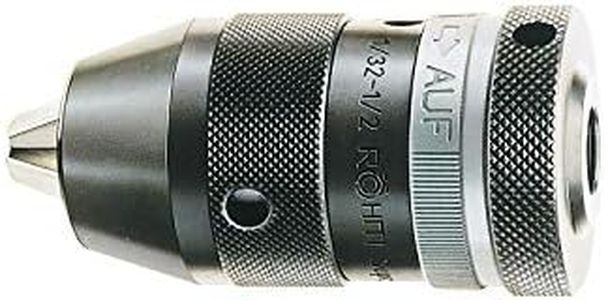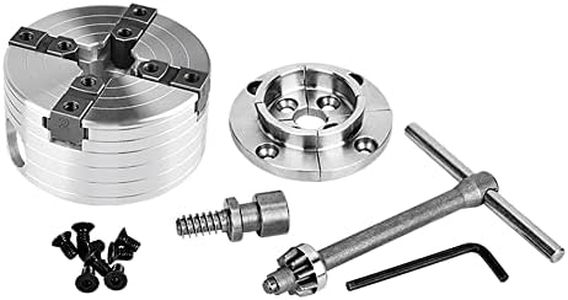We Use CookiesWe use cookies to enhance the security, performance,
functionality and for analytical and promotional activities. By continuing to browse this site you
are agreeing to our privacy policy
10 Best Lathe Chucks
From leading brands and best sellers available on the web.By clicking on a link to a third party's website, log data is shared with that third party.
Buying Guide for the Best Lathe Chucks
Choosing the right lathe chuck is important for anyone using a lathe, whether for metalworking or woodworking. The chuck is the part that holds your workpiece firmly as it spins, so selecting the right kind ensures your projects are accurate, safe, and efficient. When looking for a lathe chuck, it's useful to consider what kinds of projects you'll do, the materials you'll work with, and how frequently you'll use the chuck. By understanding the key specifications, you can make a choice that suits your needs and keeps your lathe work smooth and reliable.Chuck Size (Diameter)Chuck size, typically measured by its outside diameter, indicates how large a workpiece the chuck can comfortably hold. Larger chucks can grip bigger objects but require a larger, more powerful lathe and may be heavier. Smaller chucks are lighter, easier to handle, and suitable for smaller, detailed work. To choose the right chuck size, think about the typical size range of your projects. If you mostly turn small pieces, like pens or chess pieces, a smaller chuck is fine. If you plan to turn larger bowls or metal parts, lean toward bigger sizes.
Number of JawsLathes chucks often come with different numbers of jaws, most commonly 3-jaw and 4-jaw chucks. A 3-jaw chuck is self-centering, meaning it quickly grips cylindrical or hexagonal material at the center, making it fast and easy for repeat work. A 4-jaw chuck, on the other hand, is usually independently adjustable, allowing you to grip irregular shapes and square stock and gives more versatility, but requires more time to set up. Choose a 3-jaw chuck if you need speed and work with round pieces; opt for a 4-jaw if you require flexibility for unusual shapes.
Chuck Type (Self-Centering vs. Independent)Self-centering chucks have jaws that move together, automatically centering the workpiece, which is best for symmetrical, round pieces. Independent-jaw chucks let you adjust each jaw separately, allowing you to grip uneven or oddly shaped items, or off-center parts. The right type depends on your usual tasks: self-centering is ideal for efficiency and most basic turning, while independent is best for custom or off-axis work.
Mounting Type/Thread SizeThe mounting type or thread size tells you how the chuck attaches to your lathe spindle. It's critical to choose a chuck that matches your lathe’s spindle size and thread type, otherwise, it simply won’t fit. Manufacturers and lathes vary, so always check your lathe specifications and choose a chuck that's compatible to guarantee safe and proper operation.
Material and ConstructionLathe chucks are made from materials like cast iron, steel, or sometimes a mix of both. Steel chucks offer high strength, precision, and wear resistance, making them ideal for heavy-duty metalworking. Cast iron chucks usually cost less and can be good for light work, especially in woodworking. Consider how often and how hard you plan to use the chuck: for demanding, regular tasks, lean towards stronger materials.
Clamping RangeThe clamping range describes the minimum and maximum size of the piece the chuck jaws can grip. Chucks with a wider clamping range can accommodate a greater variety of workpiece sizes, which is useful for more diverse projects. Narrower ranges may be lighter and simpler but limit flexibility. Choose a clamping range that matches the size spread of your usual work.
Compatibility with AccessoriesSome chucks accept special jaws or attachments for holding different shapes or types of materials. This allows you to diversify your work and get more value from your chuck. When you anticipate doing more advanced work, or expect your needs to evolve, consider chucks designed for accessory compatibility.
